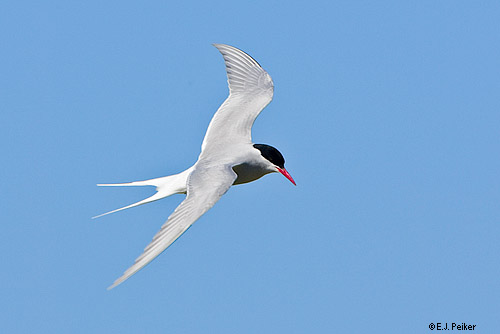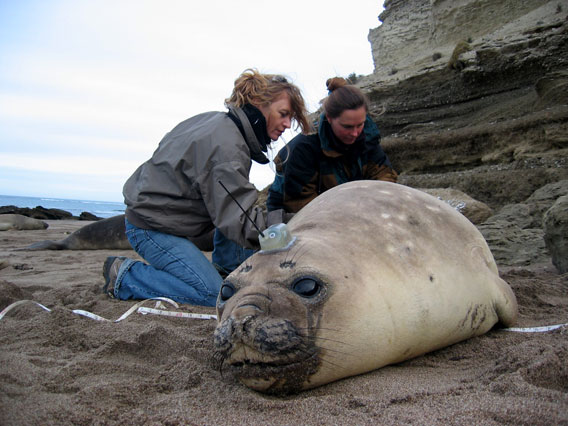Legend has it that back in ancient Greece, some guy named Pheidippides ran 27 miles (technically 26 miles and 385 yards) to alert his general that the Persians had been defeated at the battle of Marathon. Then he dropped dead from the exertion. He was of course considered a hero and the run is immortalized in the concept of the marathon, now synonymous with a grueling test of endurance.
But Pheidippides had nothing on Jackson.
Jackson, a southern elephant seal, covered 18,000 miles in a year. By my calculations that works out to 666 marathons, at a rate of roughly two per day. And not only that — he did it with the stigma of a funky 1960’s alien antenna attached to his head (see photo above).

Southern elephant seals are among the world’s largest pinnipeds (seals and their kin), reaching sizes of 7500 pounds and 20 feet long. They are abundant in the remote waters off Tierra del Fuego, at the wild and wooly tip of South America, but are potentially vulnerable to fishing operations there. They are also potential indicators of marine ecosystem health, revealing how climate change may influence the distribution of prey species at the base of Patagonia’s marine ecosystem.
To get a sense for elephant seal home ranges and movements, Jackson was fitted with a satellite transmitter by scientists from the Wildlife Conservation Society, who followed him for most of the last year. The transmitter sent a beep to WCS HQ whenever Jackson surfaced to breathe, allowing them to track his exact location from December 2010 to November 2011. Here’s what he did, according to WCS:
“After being tagged, Jackson swam 1,000 miles north, 400 miles west, and 100 miles south. All the while, he meandered though fjords and ventured past the continental shelf as he foraged for fish and squid.”
The distance is equivalent to a trip from New York City to Sydney, Australia, as the map of his peregrinations above shows. But, really, this is no big deal for marine animals. Cases in point:
1) Humpback whales migrate over 5,100 miles from Central America to their feeding grounds off Antarctica; a record distance for any mammal.
 2) Basking sharks that spend summers off Massachusetts and England can travel as far as Brazil to escape the winter.
2) Basking sharks that spend summers off Massachusetts and England can travel as far as Brazil to escape the winter.
3) Seabirds are the champions of long-distance migration. One Arctic Tern banded as a chick off the British east coast reached Melbourne, Australia within three months after fledging, a sea journey of over 14,000 miles. It was just a kid!
Makes me tired just thinking about it.

Leave a Reply